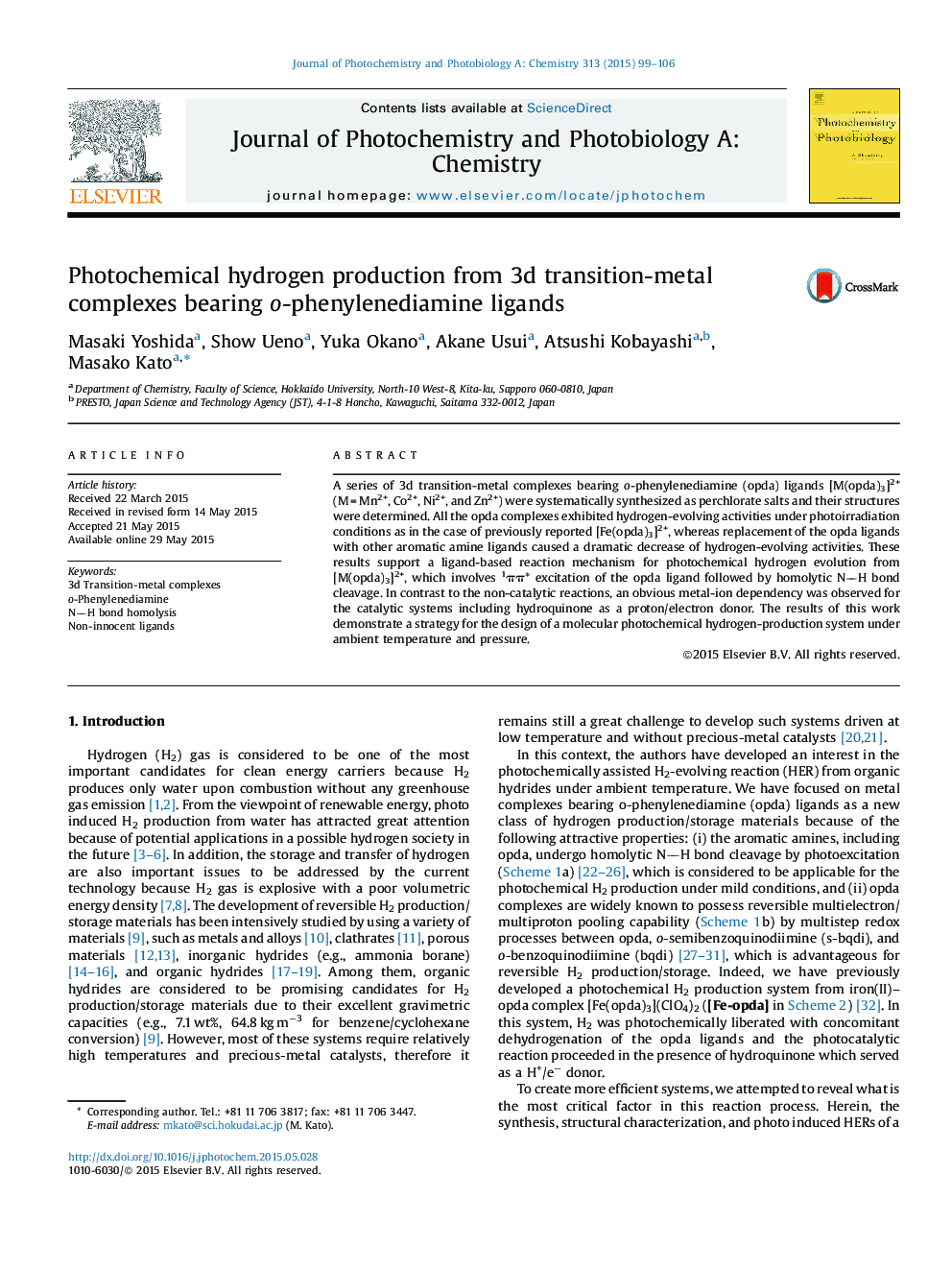| Article ID | Journal | Published Year | Pages | File Type |
|---|---|---|---|---|
| 26470 | Journal of Photochemistry and Photobiology A: Chemistry | 2015 | 8 Pages |
•A series of 3d transition-metal complexes bearing o-phenylenediamine ligands were prepared and structurally determined.•All o-phenylenediamine complexes exhibited photo-induced H2-evolving activity.•Replacement of o-phenylenediamine ligands with 8-aminoquinoline ligands dramatically decreased H2-evolving activity.•An obvious metal-ion dependency was observed for the catalytic systems including hydroquinone as a proton/electron donor.
A series of 3d transition-metal complexes bearing o-phenylenediamine (opda) ligands [M(opda)3]2+ (M = Mn2+, Co2+, Ni2+, and Zn2+) were systematically synthesized as perchlorate salts and their structures were determined. All the opda complexes exhibited hydrogen-evolving activities under photoirradiation conditions as in the case of previously reported [Fe(opda)3]2+, whereas replacement of the opda ligands with other aromatic amine ligands caused a dramatic decrease of hydrogen-evolving activities. These results support a ligand-based reaction mechanism for photochemical hydrogen evolution from [M(opda)3]2+, which involves 1ππ* excitation of the opda ligand followed by homolytic NH bond cleavage. In contrast to the non-catalytic reactions, an obvious metal-ion dependency was observed for the catalytic systems including hydroquinone as a proton/electron donor. The results of this work demonstrate a strategy for the design of a molecular photochemical hydrogen-production system under ambient temperature and pressure.
Graphical abstractFigure optionsDownload full-size imageDownload as PowerPoint slide
